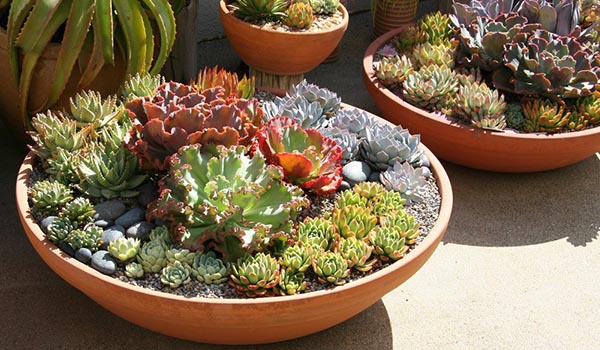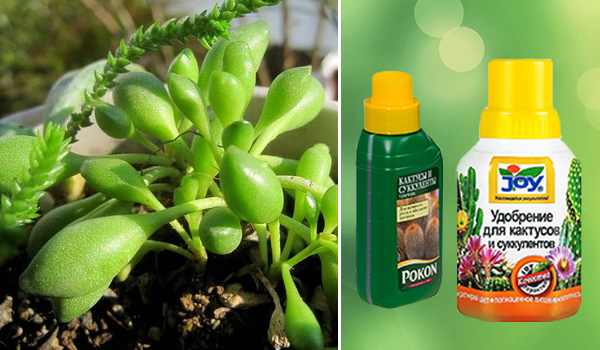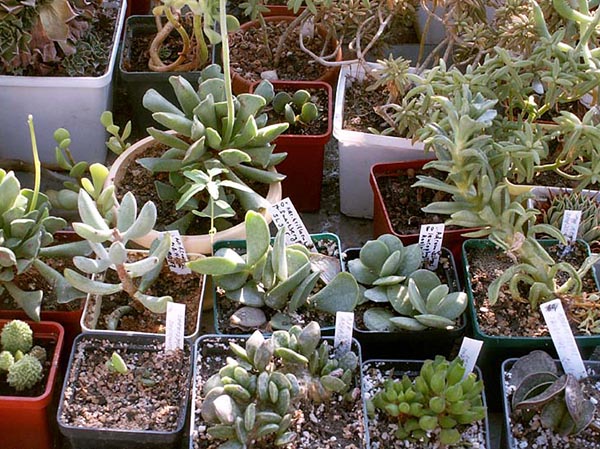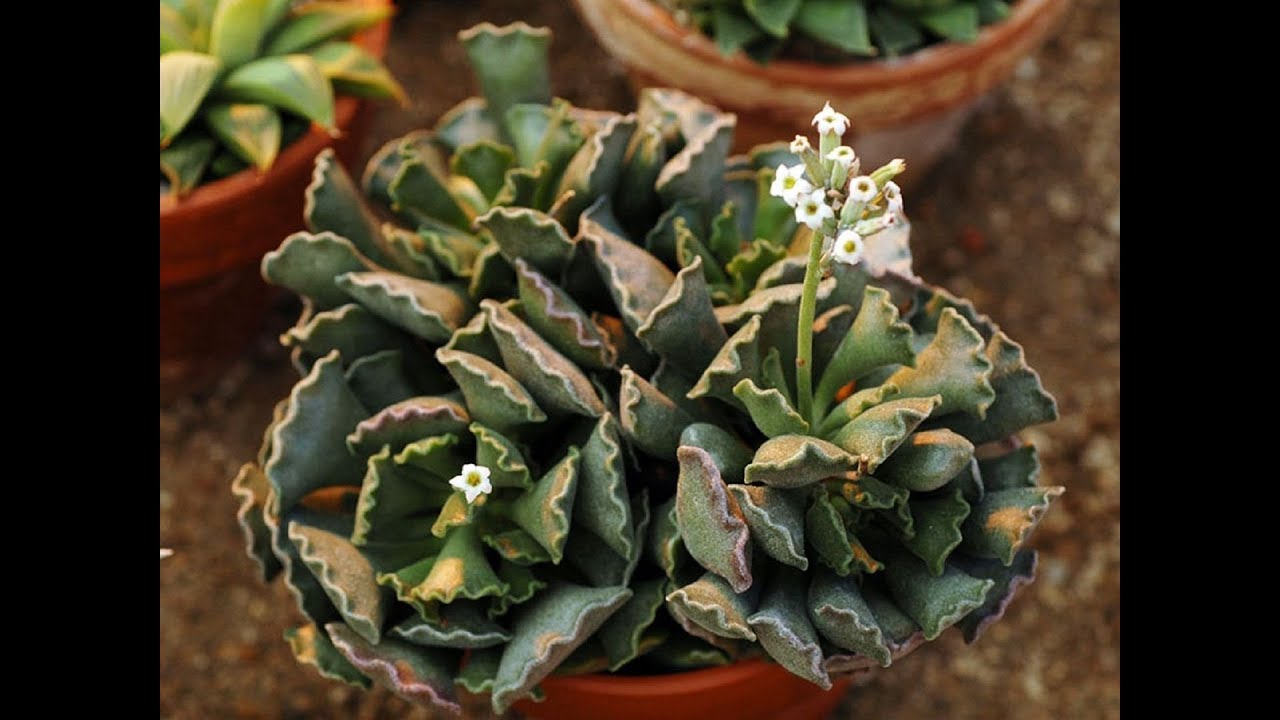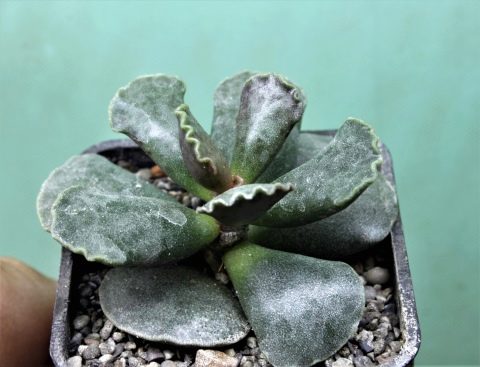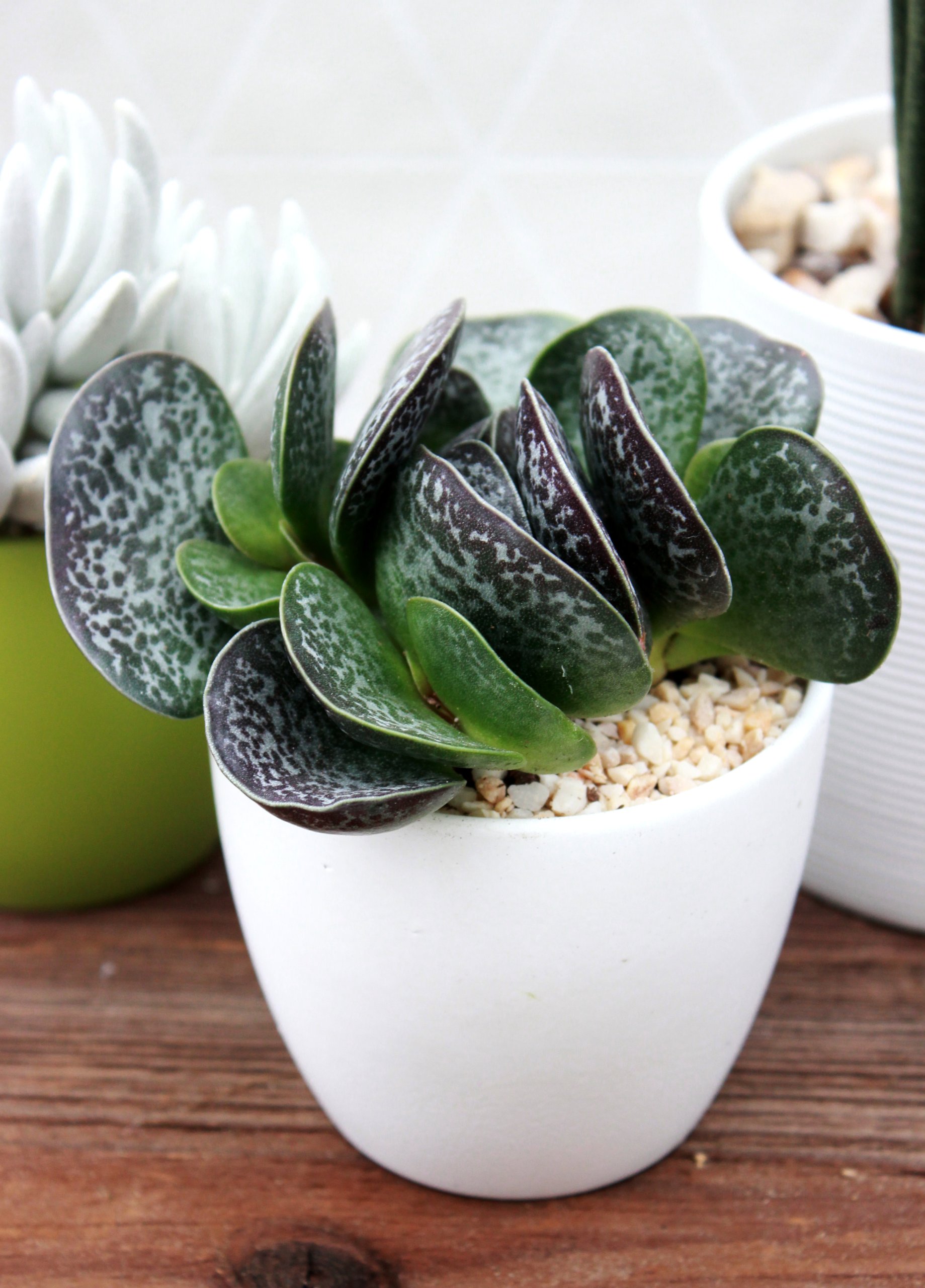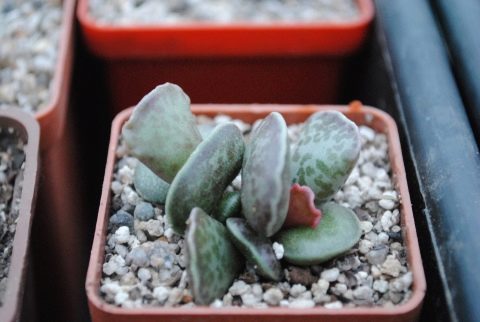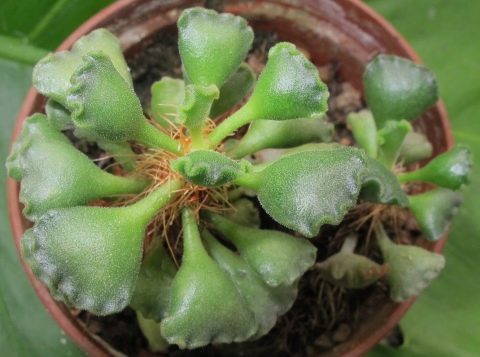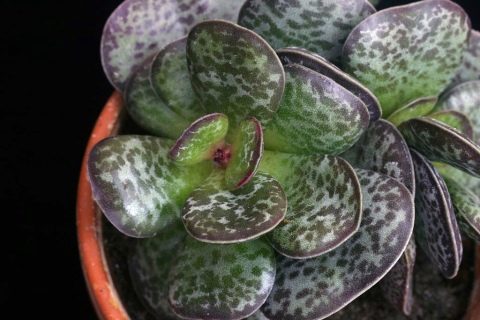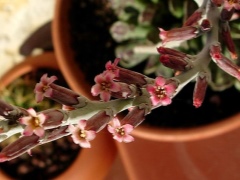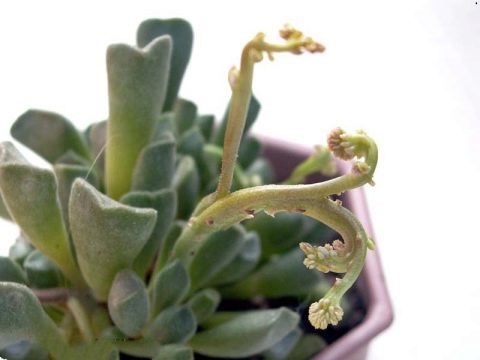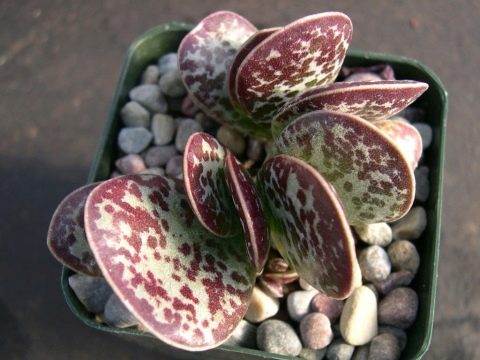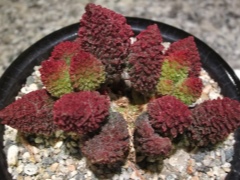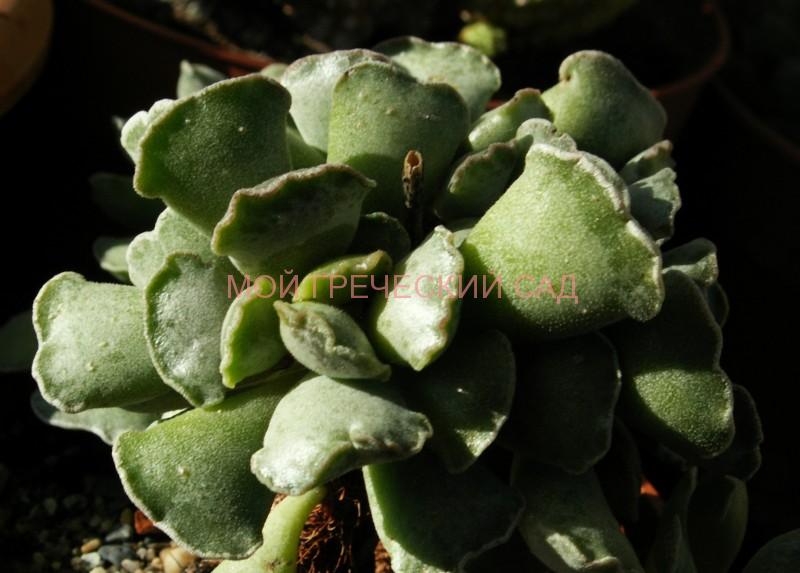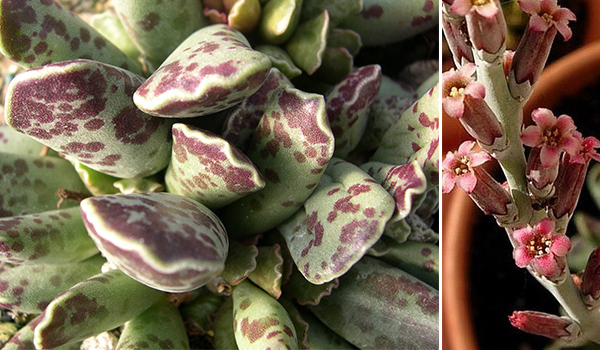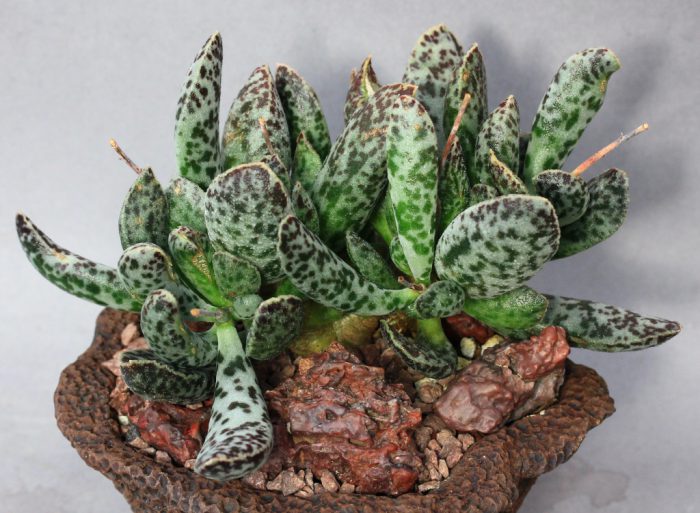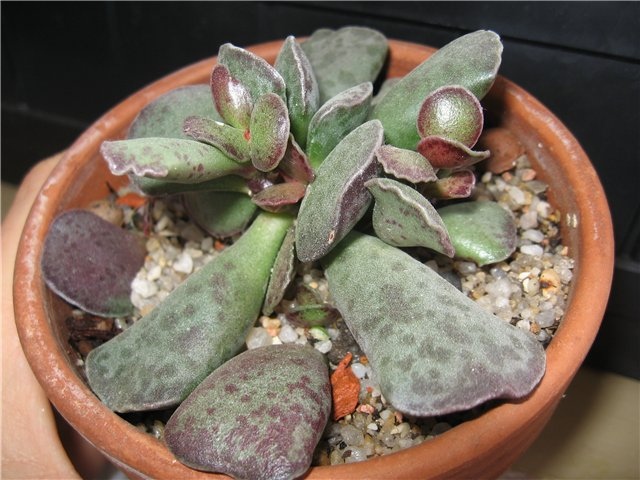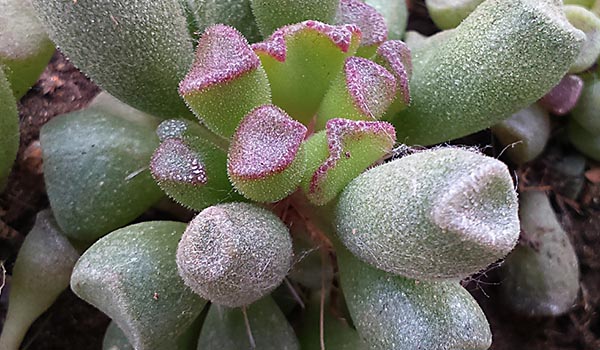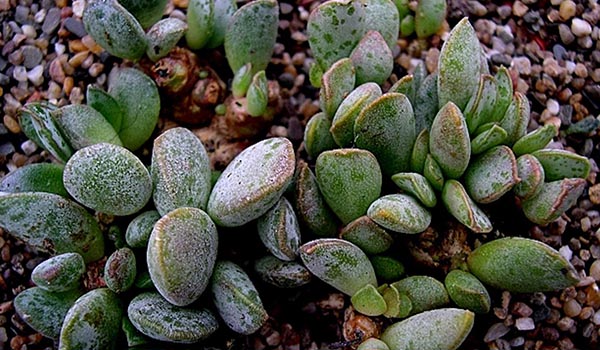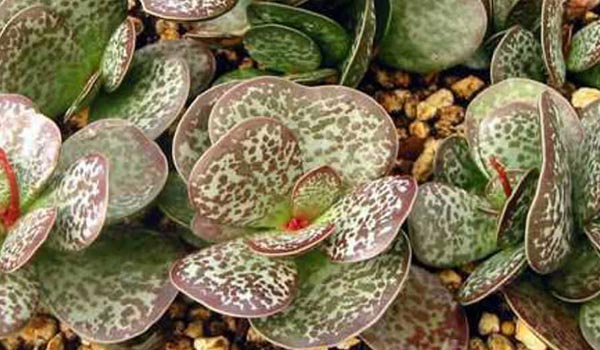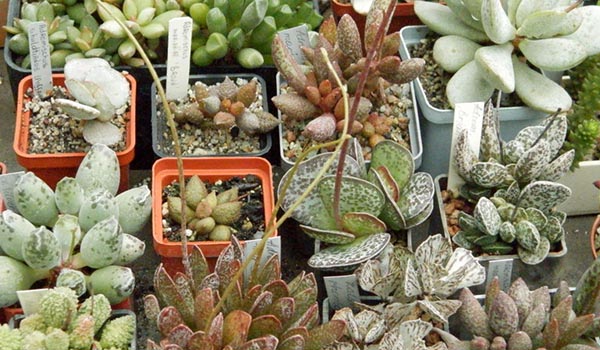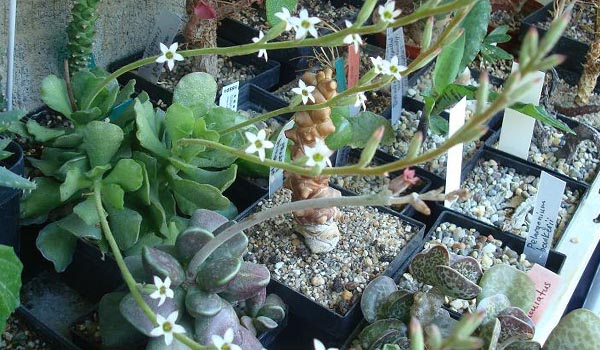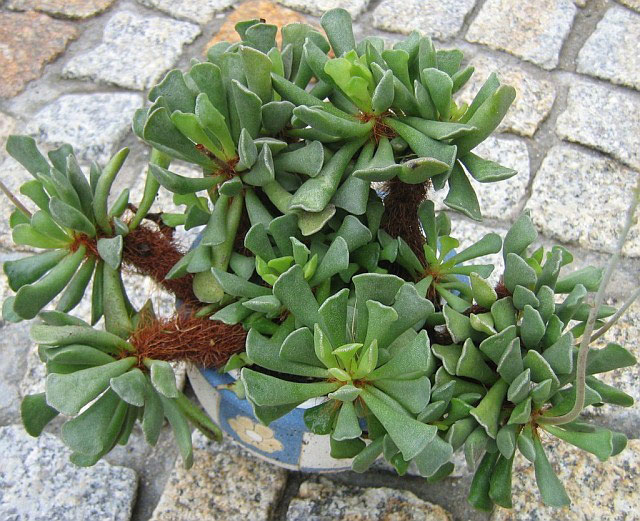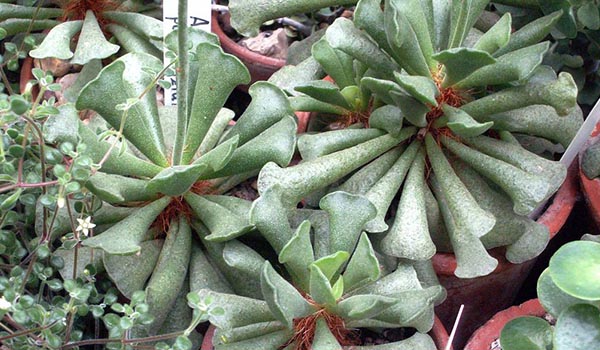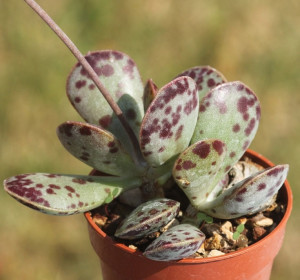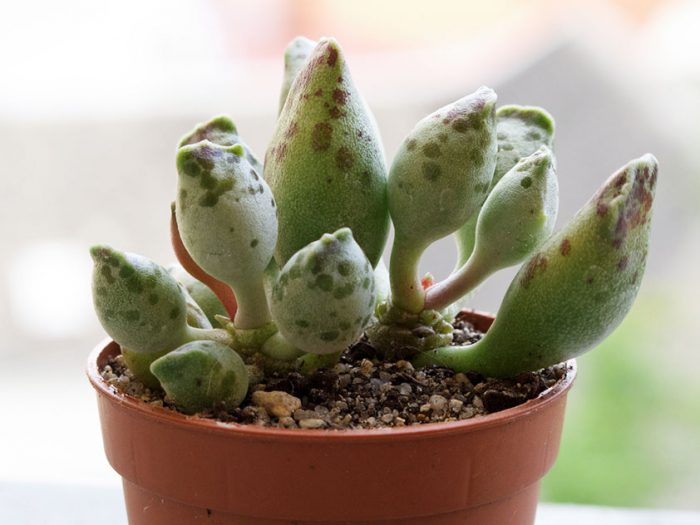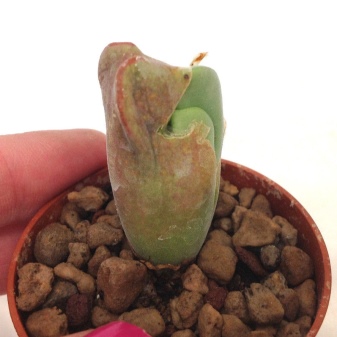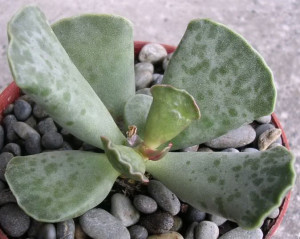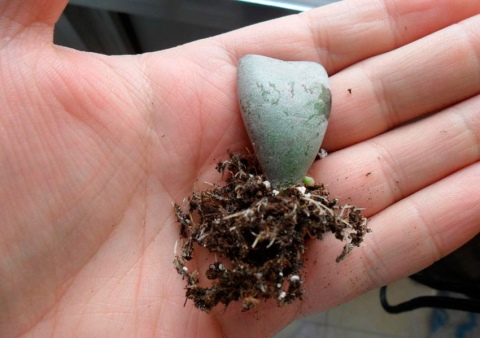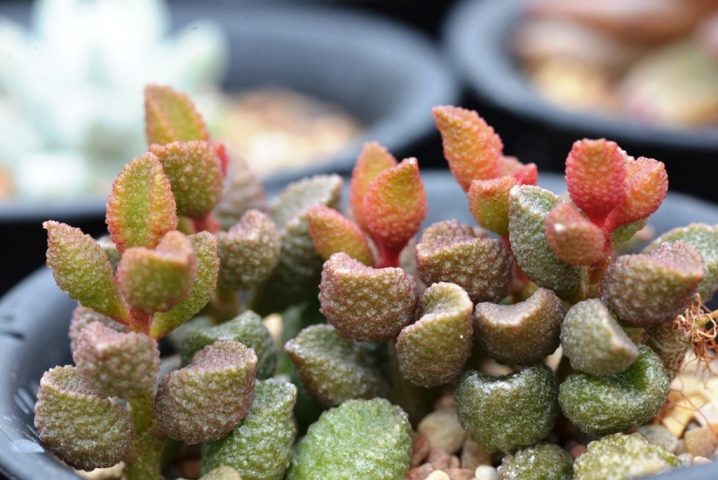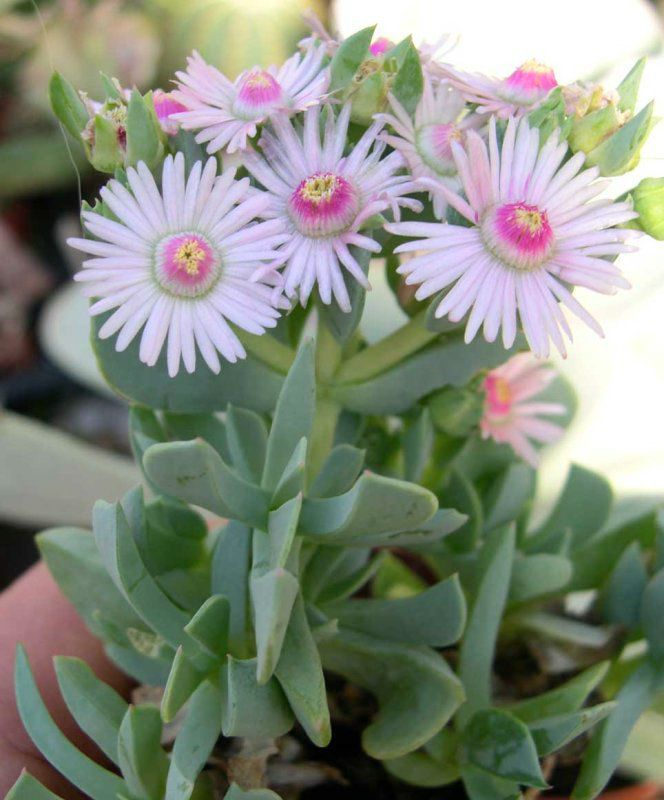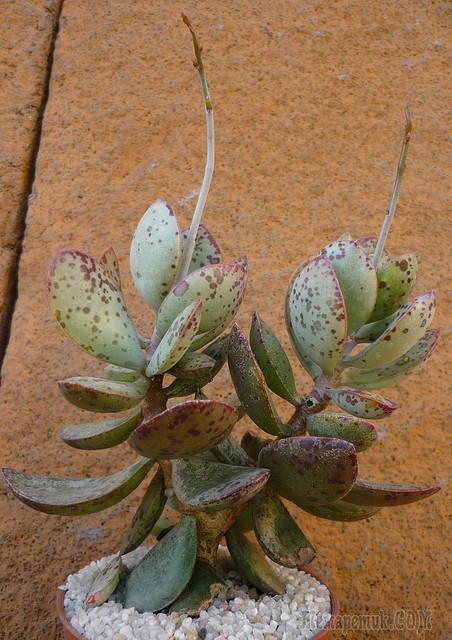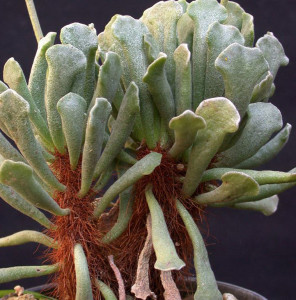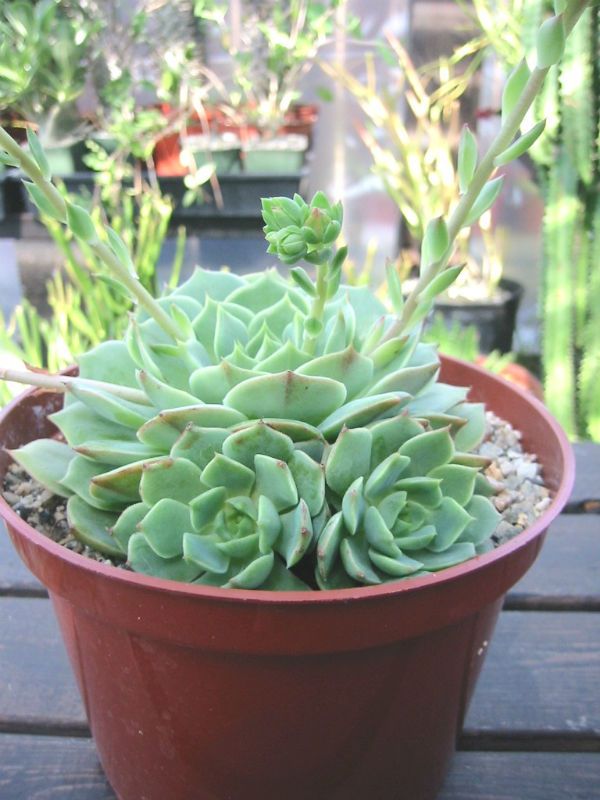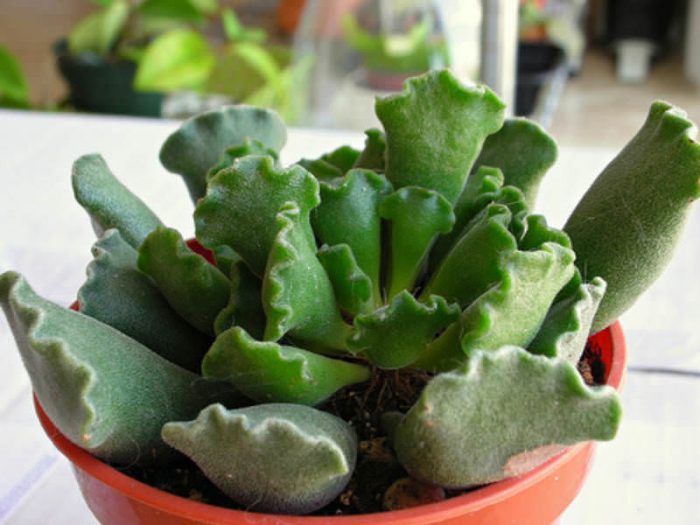Main types
Monanthes polyphylla
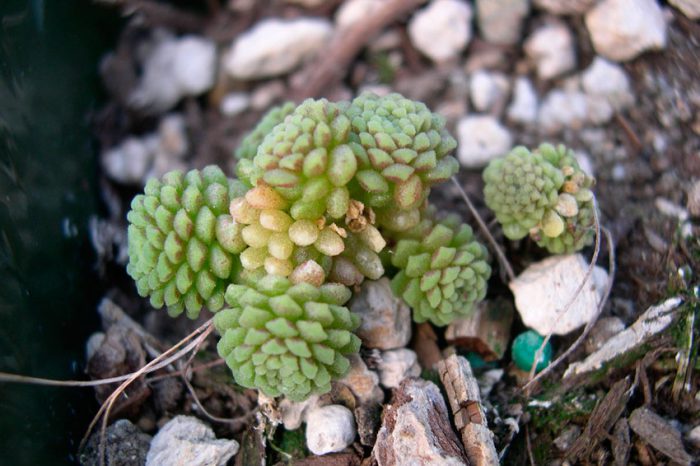
Such a herbaceous plant is a perennial. It is capable of forming rather dense cushion-shaped curtains. At the tops of the branches there are dense leafy rosettes of a conical or ovoid shape, the diameter of which varies from 1 to 1.5 centimeters. Fleshy, juicy wedge-shaped leaves are placed very tightly (their arrangement is similar to tiles). In length, the leaves reach 0.6-0.8 millimeters, and in width ―0.2-0.25 millimeters. There are papillae at the tip of the leaf plate and along the edges. The peduncle is 8 centimeters long and grows from the central part of the leaf rosette. The brush-shaped inflorescence bears 4 to 8 flowers. 6–8-membered flowers are 1 cm in diameter, and they are colored brownish-green or pale green.
Monanthes muralis
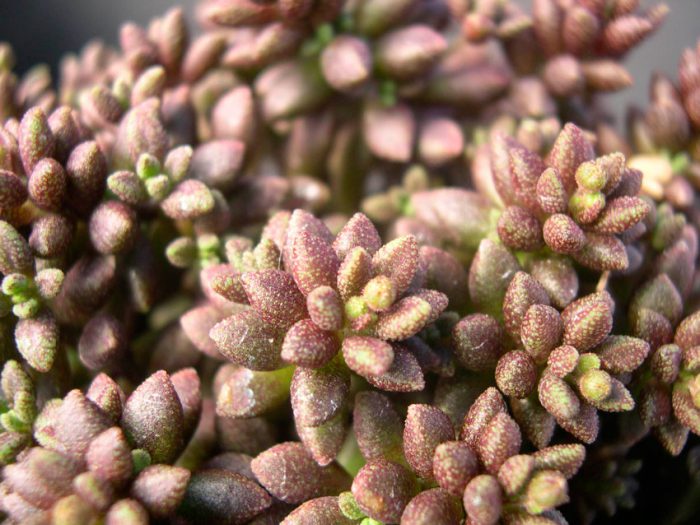
This compact shrub is a perennial. Its height does not exceed 8 centimeters. Juicy, alternately arranged leaves have a lanceolate-ovate shape with a blunt end. They reach 0.7 millimeters in length and 0.3–0.4 millimeters in width. Inflorescences bear 3 to 7 pale green flowers.
Monanthes thickened (Monanthes subcrassicaulis)
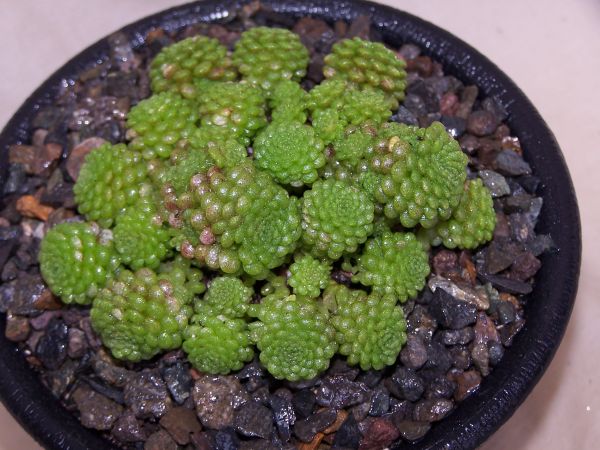
This herbaceous shrub is a perennial. It is capable of forming very dense rugs and tussocks. Dense leafy rosettes with a diameter of 1 centimeter are located at the tops of the stems. Dark green, glossy, alternate leaves overlap each other and have a clavate or wedge-shaped shape. In length, they can reach from 0.7 to 1 centimeter. The peduncle reaches a length of 3-4 centimeters and grows from the central part of the leaf rosette. The inflorescence bears from 1 to 5 purple flowers one centimeter in diameter.
Monanthes amydros
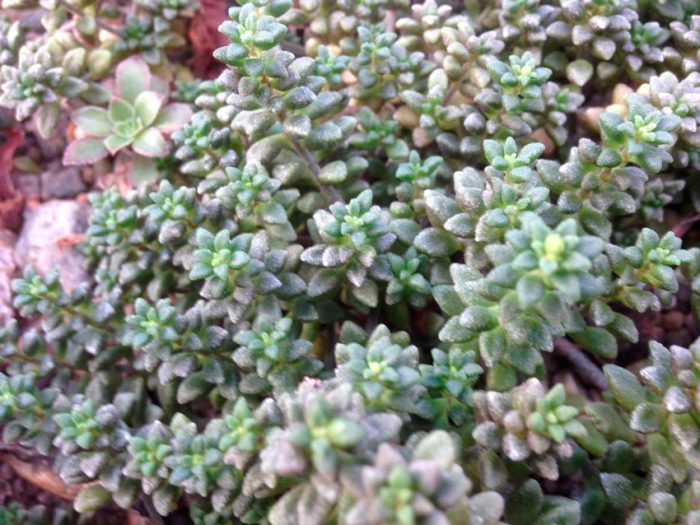
This herbaceous compact shrub is also a perennial. There are leaf rosettes at the tops of strongly branching shoots. Inversely ovate leaflets with pointed or rounded tops reach 0.4 to 0.7 centimeters in length and 0.2 to 0.4 centimeters in width. The apical inflorescences in the form of brushes bear from 1 to 5 flowers, and they grow from the central part of the leaf rosettes. The diameter of the reddish-brown or pale green flowers is 1–1.5 centimeters.
Reproduction
Adromiscus reproduces in several ways:
- leafy cuttings;
- seeds;
- dividing the bush.
Sheet
The most convenient time to implement this method is spring. In this way, it is possible to obtain a new plant while maintaining the original varietal characteristics.

With this method, the sheet is carefully separated and planted separately.
Breeding technology:
- A healthy mother bush is selected and the thickest leaves are cut from it.
- They are removed in the dark and cool for 3-4 hours so that the sections are windy.
- Then the cuttings are planted in a substrate for cacti or mixed independently from vermiculite, peat and river sand in equal proportions. Deepen the sheets by 2 cm.
- Cover the container with plastic wrap and place it in a warm place protected from direct sunlight.
Further care consists in daily moistening of the soil and airing the cuttings. As soon as the first leaves appear on them, the protection is removed. Full rooting occurs within 3.5-4 weeks.
Video: nuances of leaf propagation of succulents
Seeds
The seed method of reproduction is the most time consuming and time consuming. It is used only by experienced florists.
Sequence of steps:
- The soil is poured into the prepared container and leveled.
- Seeds are evenly distributed from above and lightly sprinkled with sand.
- Cover the seedlings with glass or polyethylene, making holes in it for ventilation.
The optimum temperature in the germination room is + 20–23 ° C. The first shoots appear in 12-14 days. When the plants grow up and get stronger, they are transplanted into separate pots.
By dividing the bush
This option is productive if implemented during the vegetative growth of the succulent. Since you have to disturb the root system of the plant, they do this in compliance with sterility. For which the tool is pre-disinfected. This is due to the tendency of the plant to be damaged by root rot at the slightest ingress of pathogenic bacteria through the sections.
The procedure takes place in the following sequence:
- A part of the root is cut off with a knife.
- It is dried in the fresh air or powdered with charcoal.
- A prepared root is planted in fertile and loose soil and covered with earth.
The roots are systematically watered with warm, settled water, trying not to create stagnation. Good illumination is required for successful germination, so it is recommended to install the container closer to the window.
The rare bloom of adromiscus is fully compensated by the decorative foliage. Such a plant in the house will become an original decoration and will fit into any interior.
And when you combine several succulents in a flowerpot, a very peculiar composition comes out, which will surely attract the attention of others
Varieties of adromiscus
According to various sources, there are from 50 to 70 species of adromiscus in nature. Only a few of them are grown in culture. Before buying adromiscus, you should study the features of each variety and choose the most interesting option.
Popular types are the following:
Cooper's Adromiscus. A miniature succulent plant with dark green leaves covered with brownish spots. The sheet plate is smooth, with a glossy surface, has an oval shape and a wavy edge. The length of the leaf is 5 cm. Along the long, fleshy peduncle are pinkish tubular flowers with five fused petals. The size of one flower is 1.5 cm.
 Adromiscus Cooper's
Adromiscus Cooper's
Adromiscus Pelnitz. Plant with short stems strongly branched from the base. The height of an adult bush does not exceed 10 cm. The leaves are in the shape of an inverted triangle. Gradually widening, smooth edge, covered with whitish, very short villi. Fleshy, nondescript inflorescences are 40 cm long and have a creeping character. The flowers are white-green, small.
 Adromiscus Pelnitz
Adromiscus Pelnitz
Adromiscus Schuldianus differs from other representatives of the genus in the color of the leaves. They are covered with a monochromatic gray film and are ovoid. The edge is slightly pointed and sinuous, has a red or burgundy stripe.
 Adromiscus Schuldianus
Adromiscus Schuldianus
Adromiscus Spotted has a more stable, upright stem, about 10 cm high. The plant branches slightly from the base and is covered with rounded or oval foliage. Green leaf blades have oval burgundy spots. The length of the leaf is 5 cm, and the width is 3 cm. The flowers are collected in a spike-shaped inflorescence and have a red-brown border.
 Adromiscus Spotted
Adromiscus Spotted
Adromiscus three-pistil reaches a length of 10 cm, has short stems and elongated leaves. The latter are pointed to the edge and have reddish spots that are collected at the upper end of the leaf. The length of the leaves is 4-5 cm, and the width is 3-4 cm. The tube of the flower is whitish at the base, towards the edge it becomes brownish-red.
 Adromiscus three-pistil
Adromiscus three-pistil
Adromiscus cristatus or comb is a small shrub, up to 15 cm high. It has a wavy outer edge of the leaves. The inverted triangle foliage has a light green tint. The ground part is covered with whitish villi. The leaves are 2-5 cm long and 2.5 cm wide.The greenish-white flowers have a pink border around the edge.
 Adromiscus cristatus or crested
Adromiscus cristatus or crested
Adromiscus care
Lighting.Adromiscus prefers bright lighting. Relatively well tolerates direct sunlight, because possible sunburn. The plant is suitable for growing on south-facing windows, but in summer it needs to be shaded. It can also grow well and at the windows of the western and eastern directions. At the north-facing windows, adromiscus may lack lighting, especially in winter.
Temperature. Adromiscus prefers temperatures around 25-29 ° C in summer. If the room is very hot, you should provide the plant with fresh air. In winter, adromiscus is kept in a cool, bright place, at a temperature of about 10-15 ° C, but not lower than 7 ° C.
Watering. From spring to autumn, adromiscus is watered moderately - some time after the topsoil has dried. In autumn, watering is reduced, and in winter it is rarely watered, or they do without watering, depending on the temperature of the content - the lower the temperature, the less often watering. Watering must be done with soft, settled water at room temperature.
Air humidity. Adromiscus tolerates dry indoor air well, in principle, like all plants of the fatty family. There is no need for high values of air humidity.
Rest period. The dormant period of the plant falls in the winter. At this time, adromiscus is recommended to be placed in a bright, cool place (temperature is about 10-15 ° C, not lower than 7 ° C), watering is either rare, or kept without watering at all.
Fertilizer. Adromiscus is fed from spring to autumn once a month. To do this, you can use cactus fertilizer. In the autumn-winter period, the plant is not fed.
Transfer. Adromiscus is transplanted as needed, in the spring. The capacity is small. The substrate is friable, with a lot of sand. It is useful to add brick chips and pieces of coal to the soil. Provide good drainage at the bottom of the pot. After transplanting, watering is very careful - little by little, so as not to cause rotting of the roots.
Reproduction. When andromiscus is propagated by leaves, before planting for rooting, leaves or a rosette of leaves are pre-dried in a dark and dry place for several hours. Then suitable containers are planted, you can root in wet sand, vermiculite, or a mixture of substrate for succulent plants and sand. Roots usually grow within 1 month. Rooted cuttings and leaves are planted in 5-7 cm pots. The composition of the soil is the same as for seedlings. Caring for them is the same.
Home care for adromiscus
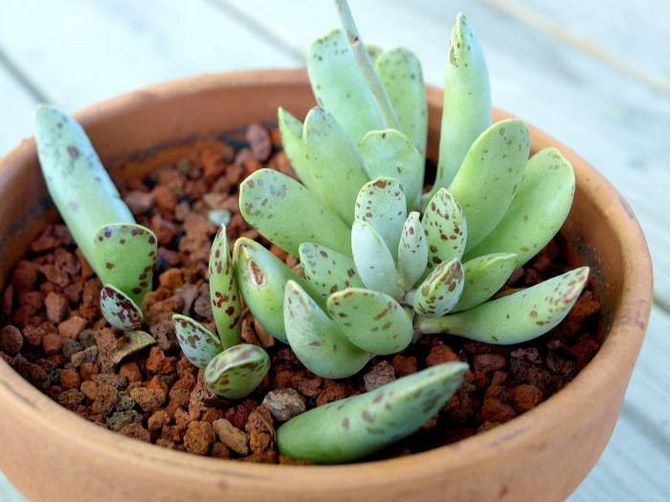
Location and lighting
Adromiscus needs bright daylight. The plant easily tolerates direct rays without the appearance of burns on the leaves.
Temperature
In summer, the optimal temperature for a plant will be about 25-30 degrees, in winter 10-15 degrees, but not less than 7 degrees. If the room temperature is too high, the adromiscus should be near an open window.
Air humidity

Adromiscus is insensitive to air humidity. It can be kept in a room with dry air, while the succulent does not need spraying.
Watering
In the spring-summer period, watering of adromiscus should be moderate, as the substrate in the pot dries completely. In autumn, watering is gradually reduced, and in winter they do without it. If the air temperature in the room is high in winter, then you can occasionally moisten an earthen lump with warm, settled water.
Top dressing and fertilizers
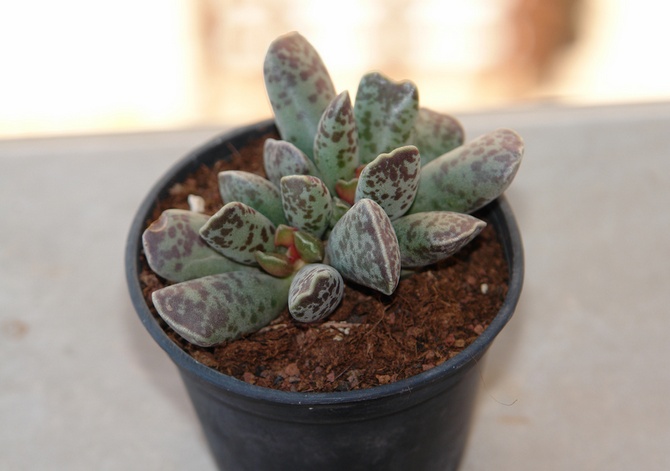
To fertilize adromiscus, special feeding for cacti is used. The diluted fertilizer concentrate is applied to the soil once a month from March to September inclusive. In winter, adromiscus is at rest: it does not need feeding and watering.
Transfer
As needed, adromiscus is transplanted into a larger pot. This should be done in the spring.You can use a ready-made substrate made for cactus and sold in a specialty store.
It is important to place a generous layer of drainage at the bottom of the pot.
2.Adromiscus home care
2.2. Reproduction - adromiscus from seeds
Leaf propagation is often successful. Leafy cuttings can simply be placed on top of the soil until roots appear. You can also use seeds. It will take more than 3 months for flowering after the initial stem appears.
2.3 Watering
Succulent plant tolerates drought well, like other representatives of this type of plant. Water regularly during warm periods, however make sure the soil dries out between waterings. Reduce watering in the fall and keep the humidity low enough in winter to keep the leaves from shriveling. Drain off excess moisture that has accumulated in the pan a few minutes after watering.
2.4. Maintenance of the house, wintering of adromiscus
As it develops, the center of the plant is exposed. Free it from the side cuttings and discard the central part, and root the side shoots. In warmer months, take the plant outside.
2.5 Soil composition
The composition of the soil for succulents is approximately the same, the main requirement is its moisture permeability. Any well-drained soil, sandy substrate with very little organic matter (peat, humus) will do. Perfect drainage is essential.
2.6 Transplanting adromiscus
Every 2 - 3 years on very porous soil. Use a pot with good drainage. All species of this genus are best kept in small pots, since planting in large containers provokes the development of rot.
2.7 Temperature conditions
Tolerates coolness in winter if kept dry. Avoid getting water on the leaves in winter - this will lead to decay of the plants. The minimum temperature is 5 ° C (withstand short-term frosts down to -7 ° C if placed in dry soil).
2.8 Lighting
Under strong light, growth remains compact, and the leaves acquire a reddish-burgundy hue; when grown in partial shade, the plants become loose and elongated. Variegated varieties require a lot of sun, their leaves turn green in the shade. Unfortunately, the main growth period occurs in the autumn-winter period, when the lighting is poor, while the summer months are mainly devoted to flowering.
2.9 Fertilizer
Once a month with a high potassium cactus fertilizer. During the dormant period, when the plants stop their development, feeding should be stopped.
2.10 Spraying
It transfers even very dry air and does not need spraying. In autumn and winter, the air around the plant should be dry.
2.12. Appointment
A very cute compact plant, a composition of several varieties of contrasting shades in one pot looks good.
Note.
Plant Adromiscus: description of the genus
The name Adromischus means "thick stem". The genus of plants belongs to the Crassulaceae family. Most of all, the culture is widespread in the south of the African continent. The plant is usually herbaceous, semi-shrub type, which has a creeping stem. The bush can reach heights up to 0.15 meters.
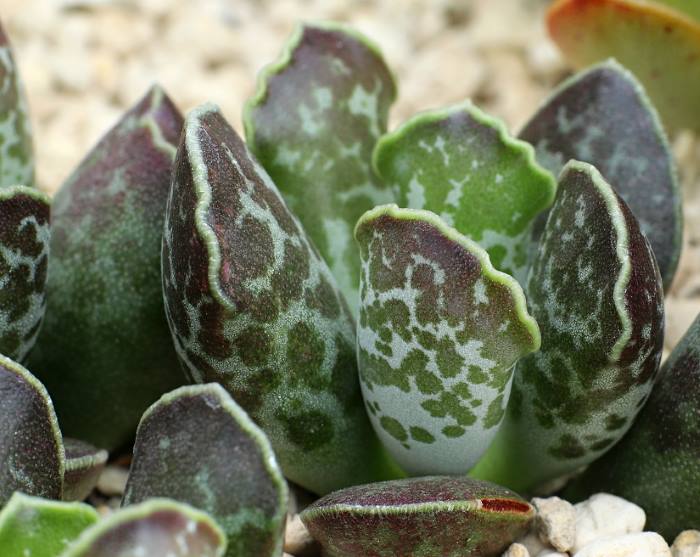 Photo of one of the types of Adromiscus
Photo of one of the types of Adromiscus
The stem is found in a contrasting shade of terracotta, it can be covered with roots, therefore it often visually resembles miniature palm trees. The root system is used to consume moisture, nutrients from the air. It is very thin, threadlike, and needs special attention.
The leaves are quite thick, fleshy, and can be colored green or variegated. Their shape is predominantly round or triangular, the leaves are fixed on a short, but rather dense petiole. The leaves are up to 0.5 meters wide and 1 centimeter thick.
Flowering will delight you with white-pink colors, the shape of the buds is tubular
The spike-shaped form of the peduncle attracts attention, has a spectacular appearance
Placement of adromiscus on the windows and the need for additional lighting
Since light is the main thing that adromiscus needs for normal development, you need to think about how the lighting of the plant will be organized even before buying. In most cases, it will be difficult to do without artificial lighting:
| Placement on the northern windowsill | Placement on the east windowsill | Accommodation on the western windowsill | Accommodation on the southern windowsill |
| Without phytolamp, this option is completely excluded. On the north window, adromiscus will chronically receive less light. | Possible option for sunny spring and summer days. But in cloudy weather, as well as in the autumn-winter period, supplemental lighting with a phytolamp is required. | In spring and summer, in sunny weather, it can be placed without supplementary lighting. In other cases, you need to turn on the lamp. | An acceptable option for placing adromiscus. Additional lighting may be required only on cloudy days in autumn or winter. |
Not all growers, however, place adromiscus under phyto lamps. There is a practice of growing these plants without additional artificial lighting in the northeast and east, as well as on the west windows. However, the color of the leaves and the general habit of such specimens leaves much to be desired.
 With a lack of light, the spots on the leaves of Cooper's adromiscus turn green. The trunk becomes more elongated, gaps are noticeable between the leaves. The lower leaves may turn yellow and fall off. Such changes are even more noticeable in adromiscus cristata.
With a lack of light, the spots on the leaves of Cooper's adromiscus turn green. The trunk becomes more elongated, gaps are noticeable between the leaves. The lower leaves may turn yellow and fall off. Such changes are even more noticeable in adromiscus cristata.
General information and types
Despite the species diversity, all adromiscus have certain similarities. For example, they are all stunted succulents. So, the height of erect shrubs does not exceed 10 cm, and of horizontal herbaceous subspecies - 15 cm. They actively branch and grow foliage.
But, nevertheless, the species are not devoid of variety and each of them has its own "zest":
Adromiscus spotted (maculatus)
Compact, undersized, weakly branching succulent plant. The green leaf blades are round or oval, covered with graceful reddish specks, which are a real decoration.
A blooming succulent, it produces flower stalks on which reddish-brown flowers bloom.

Comb (cristatus)
The height of the flower does not exceed 15 cm. Gradually, its branches turn into creeping shoots, which hang a little from the flowerpot. Numerous air roots appear on the stem of the cristatus.
Adromiscus comb has small leaf plates with an edge, convex shape. It blooms with greenish-white flowers with a pink edging, the front edge of the buds is wavy. There are several varieties of crested adromiscus: clavofolius, shonlandia, zeikheri, mzimvubuensis.
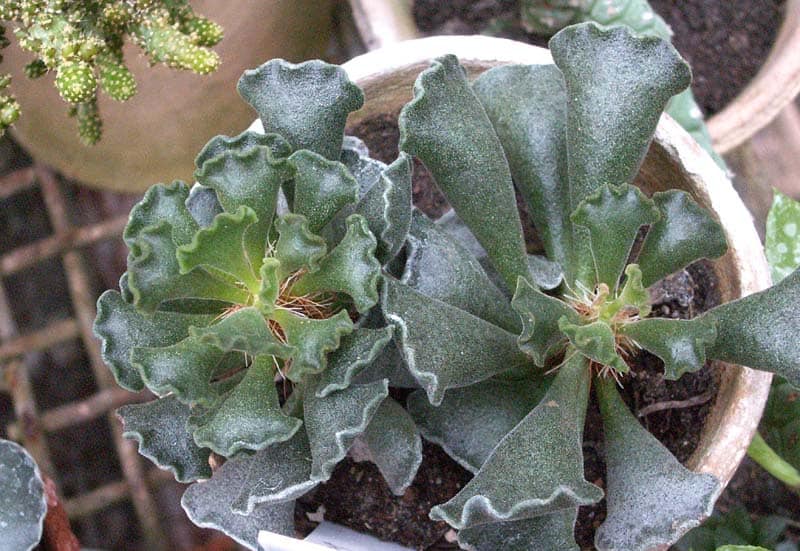
Cooper
Even among stunted and not particularly spreading species, Cooper's adromiscus is compact. Its stem is very strongly branched, green glossy leaves with red-brown specks. In addition to the original color, the foliage of the succulent has a very nice wavy shape. Adromiscus flowers are greenish-red, with white, purple or pink edging, form bouquets of inflorescences.

Three-pistil
Another undersized but weakly branching variety of adromiscus. The leaves are rounded, slightly elongated, 4–5 cm long. The color is dark green, with noticeable reddish-brown blotches, the same shades in the three-pistil adromiscus and flowers.
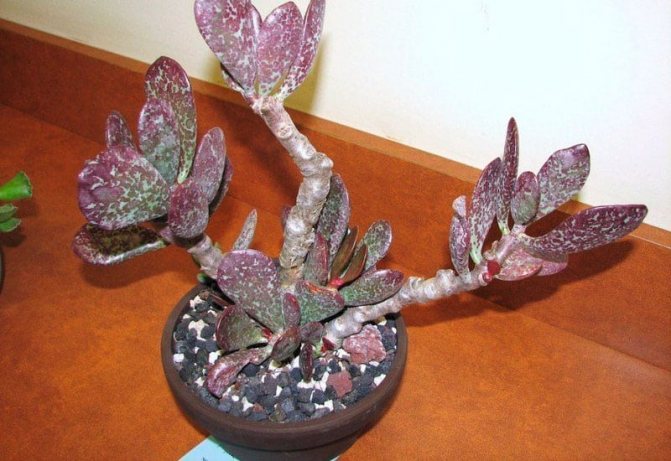
Khalesovensis
Adromiscus with elongated triangular leaves. At the base, they narrow and widen at the edges, at the end there is a pointed notch, similar to a comma. The color of the foliage is light green, shimmery with silver, the surface is glossy, there are tiny wax dots closer to the edge.
Flowers are small, solitary, reddish-green or greenish-brown in color.

No matter how original adromiscus looks, caring for it at home will not be particularly troublesome. It is enough to take into account the special needs of all succulent plants and adhere to the rules for their cultivation.
Soils and pots for planting adromiscus
Pots for growing adromiscus should be small
Given the weak root system of this crop, it is important to avoid containers in which the plant cannot quickly absorb the incoming volume of water. It is necessary to choose pots with large drainage holes, and also lay a layer of drainage material on their bottom - expanded clay, pieces of pumice or small stones
Peat transport soil, in which plants are usually sold, must be replaced immediately after purchase with a substrate more suitable for adromiscus. There are different options for soil mixtures in which this crop will grow well:
| Soil mixture option | Purchased soil for succulents | Leaf land | Coarse sand | Charcoal | Brick chips |
| №1 | 1 part | – | 1 part | – | 1 part |
| №2 | – | 1 part | 1 part | 1 part | 1 part |
These mixtures are good for young plants. For old ones, you can add a little Akadama clay, which is sold in bonsai stores, to the substrate.
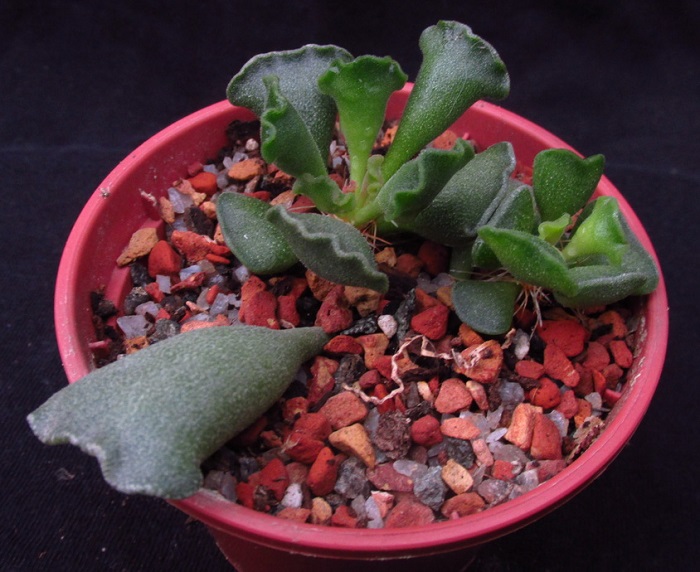 It is categorically not recommended to add compost, humus, vermicompost and other nutritious organic matter to the soil for adromiscus. This way, the culture loves to grow on almost pure mineral soils that do not contain a large number of soil bacteria, therefore, an excess of organic matter leads to root infections.
It is categorically not recommended to add compost, humus, vermicompost and other nutritious organic matter to the soil for adromiscus. This way, the culture loves to grow on almost pure mineral soils that do not contain a large number of soil bacteria, therefore, an excess of organic matter leads to root infections.
Temperature regime of the content of adromiscus
Cyclicity in the development of adromiscus is observed quite clearly. Therefore, the imitation of the change of seasons for these plants, although not strictly necessary, is a desirable condition. The temperature regime of the content is recommended as follows:
| Spring and summer | Autumn and winter | ||
| Maximum temperature | Minimum temperature | Maximum temperature | Minimum temperature |
| + 29-30C | + 22-23C | + 16-17C | + 10-12C |
Practice shows that adromiscus are able to withstand lower winter temperatures:
If it is not possible to significantly reduce the air temperature for the winter, you can leave the plant to winter on the windowsill, fencing it off from the hot air flow coming from the heating batteries.
6 pests and diseases
Prone to rotting in case of excessive watering and insufficient drainage.
The flower is vulnerable to mealybugs, spider mites, aphids.
Insects are pests
| Insect name | Signs of infection | Control measures |
| Mealybug or felt insect | The surface of the leaves and shoots is covered with fluffy, cotton-like white bloom. Plants are lagging behind | Folk remedies: spraying with soap and alcohol solution. Infusion of tobacco, garlic, cyclamen tubers, alcohol treatments, pharmaceutical tincture of calendula proved to be good. Chemicals: green soap solution, Actellik, Fitoverm. |
| Spider mite | Subtle spider webs on the leaves, yellowing and foliage falling off with extensive lesions. The surface of the sheet plates becomes dead and covered with small cracks. Plant development slows down. | Folk ways. Plants can be rinsed in the shower and left in the bathroom in a humid atmosphere for half an hour. Irradiation with an ultraviolet lamp every week for 2 minutes. Chemical preparations based on pyrethrum, sulfur powders, Fitoverm, Actellik. |
| Aphid | Sticky droplets appear on the leaf plates, the leaf plates curl and deform, delicate buds and young leaves wither. Insect colonies can be seen on the tops of the shoots, buds or the underside of the leaf plates. The flowers of aphid-infested plants may become deformed. | Folk methods: infusion of nettle, decoction of rhubarb leaves, wormwood, soap solution, infusion of tobacco and dandelion, onions, marigolds, yarrow, tansy, dusting with wood ash.Chemical preparations: Sulfur powders, green mass treatment with green potash soap without getting into the ground, Decis, Aktellik, Fitoverm. |
-
Mealybug
-
Spider mite
-
Aphid
Brief description of cultivation
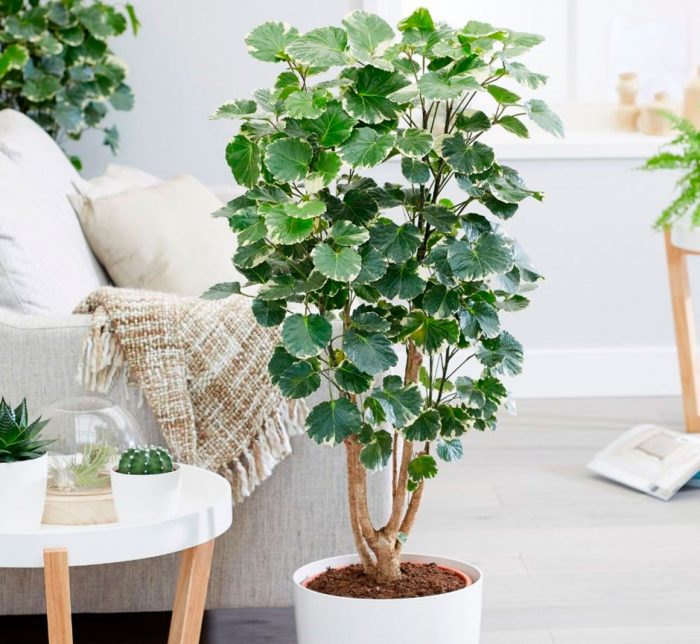
- Bloom. Grown as an ornamental deciduous plant. It does not bloom in indoor conditions.
- Illumination. Green-leaved species grow in light shade, and variegated ones - in bright diffused light.
- Temperature conditions. In winter - from 17 to 20 degrees, during the growing season - from 20 to 23 degrees.
- Watering. During the spring-summer period, the bush is watered often, but in moderation, immediately after the top layer of the soil mixture in the pot has dried. And in winter, watering is reduced and it is carried out only after two or three days have passed after the top layer of the soil mixture has dried.
- Air humidity. It should be tall. Therefore, it is recommended to put the pot with the plant on a tray filled with damp pebbles, or it is necessary to systematically moisten the plant from a spray bottle.
- Fertilizer. Top dressing is carried out in April-October twice a month, for this they use mineral fertilizer for decorative deciduous plants. Moreover, in the period from October to April, the polisias is fertilized twice less often (once a month).
- Rest period. Not pronounced, but in winter the flower grows more slowly.
- Transfer. In the last days of March or in the first days of April. While the bush is young, its transplant is carried out regularly once a year. An older plant is transplanted once every 2 or 3 years.
- Reproduction. Seeds, but much more often - apical or stem cuttings.
- Disease. Root rot.
- Pests. Aphids, root nematodes, scale insects and mealybugs.
How to grow adromiscus from seeds
If the florist is engaged in the cultivation of this culture for the first time, in this case the seed is used. The seeds can be purchased from a specialist store. For those who do not know how to successfully grow a succulent plant using seeds, see the information below.
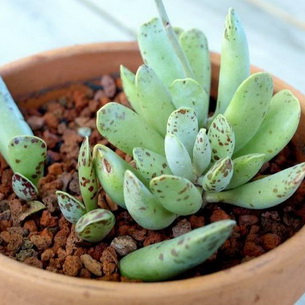
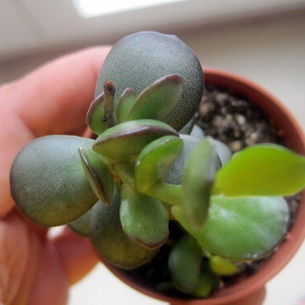
For sowing, prepare a small container with holes to prevent stagnation of water, which is filled with soil for succulents. Seeds of adromiscus are evenly scattered over the surface of the earth, covered with a small layer of sand on top. Sand can be replaced with small pebbles. Crops are sprayed from a spray bottle. The container is tightly covered with a film and taken to a room with a temperature of 20 - 25 degrees. Seeds sprout in 10 to 15 days. After that, the film is removed. When the grown plants become stronger and larger, they are transplanted into separate pots.

